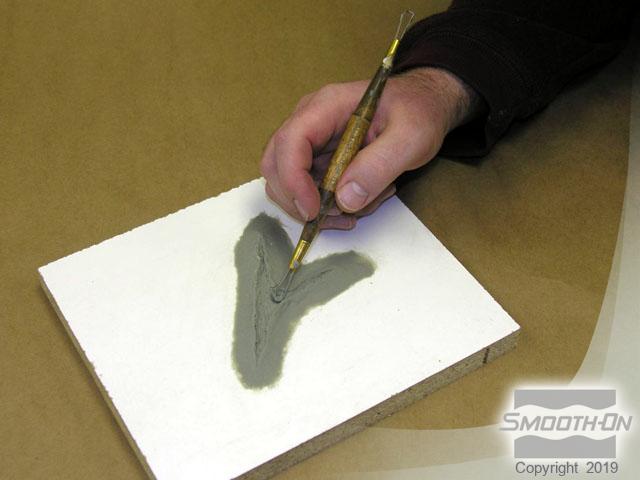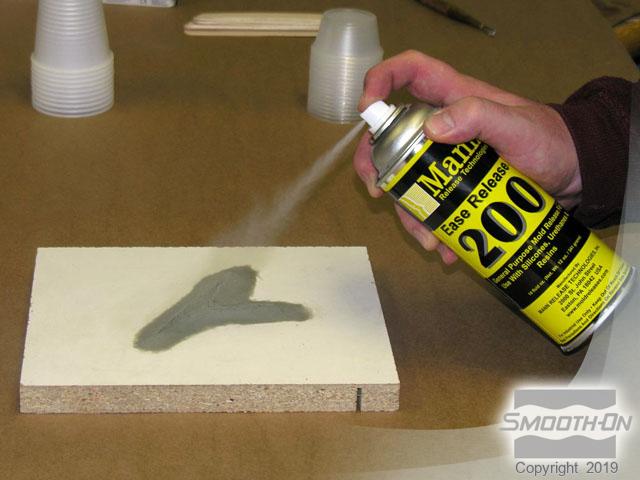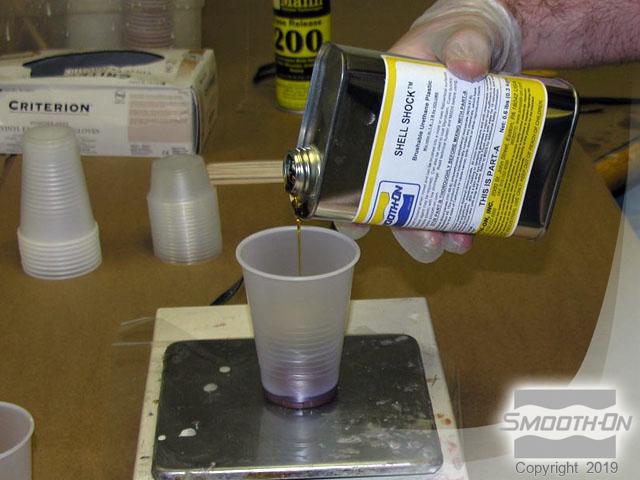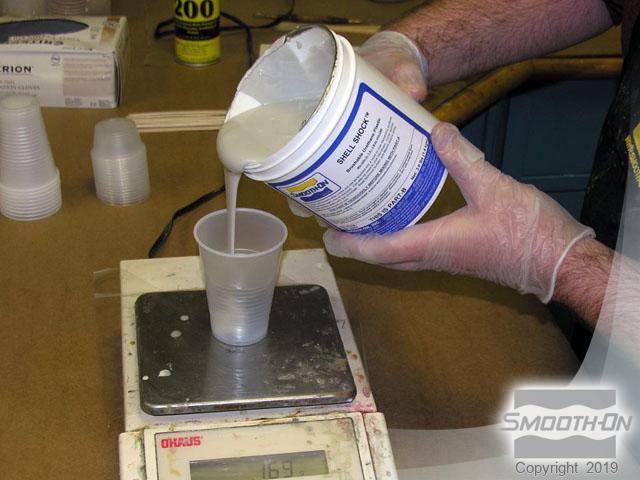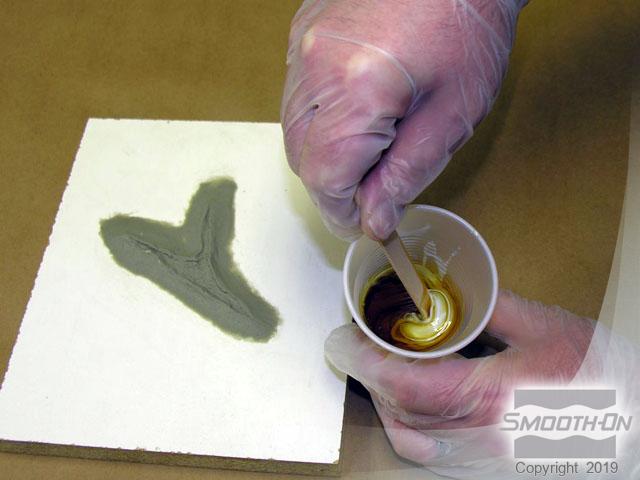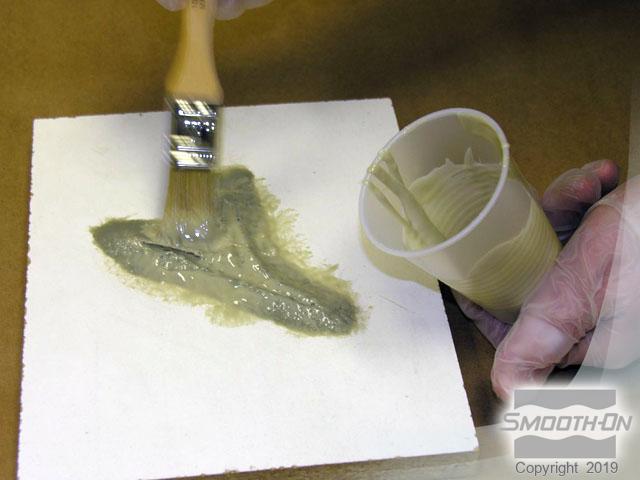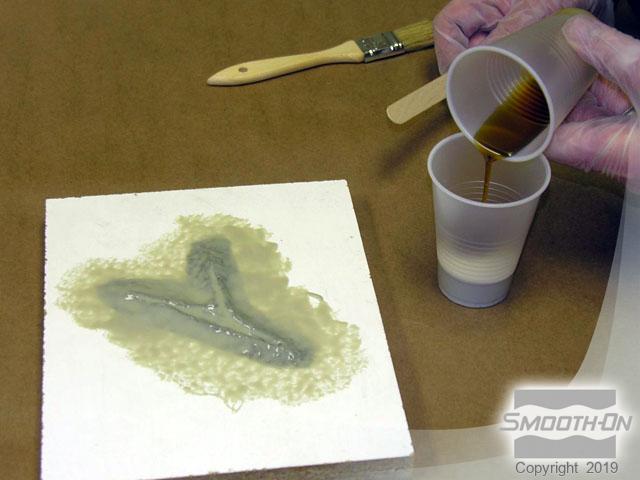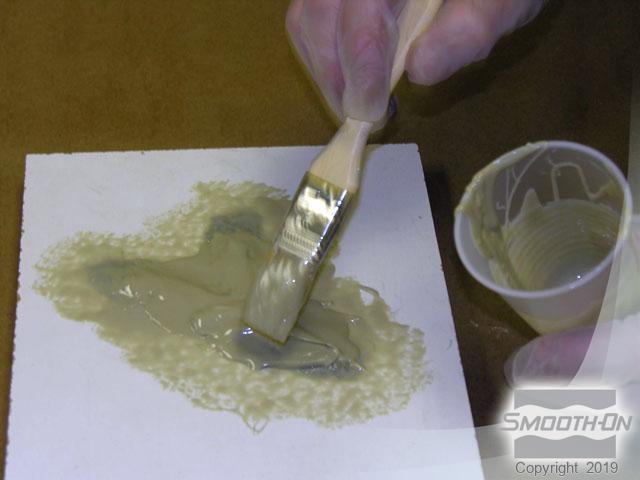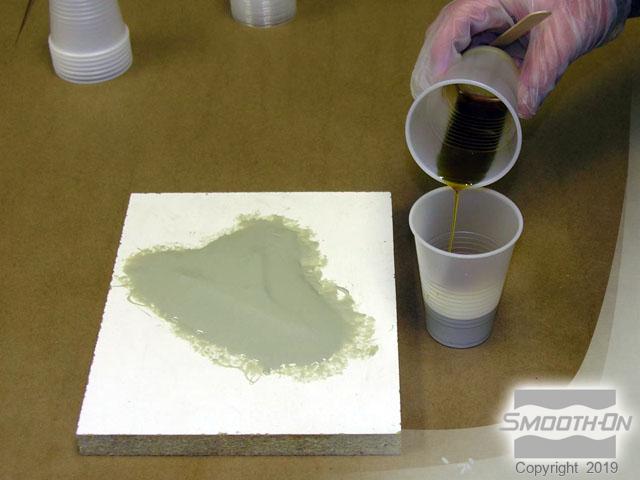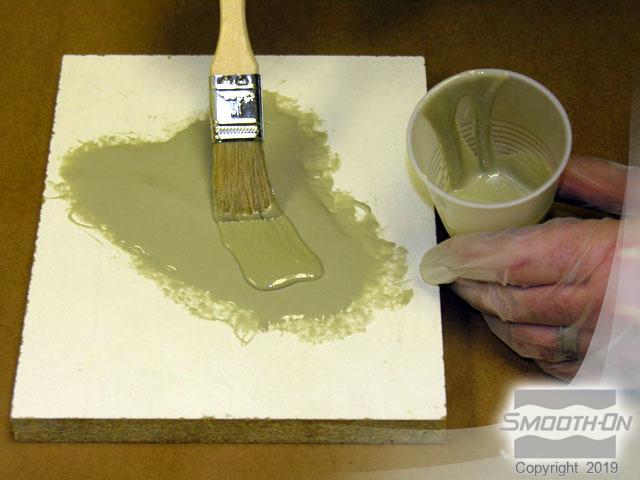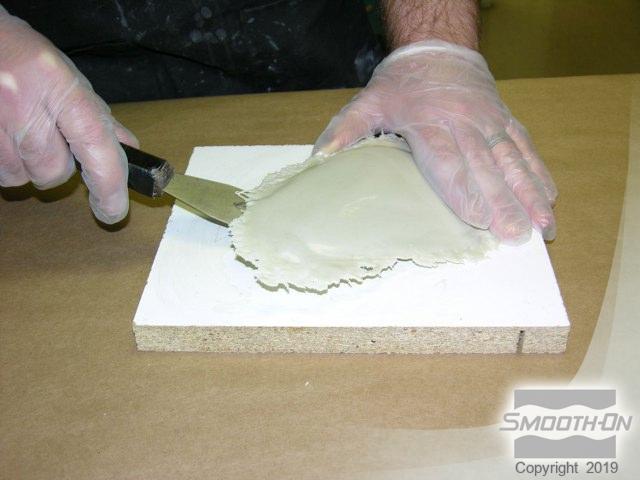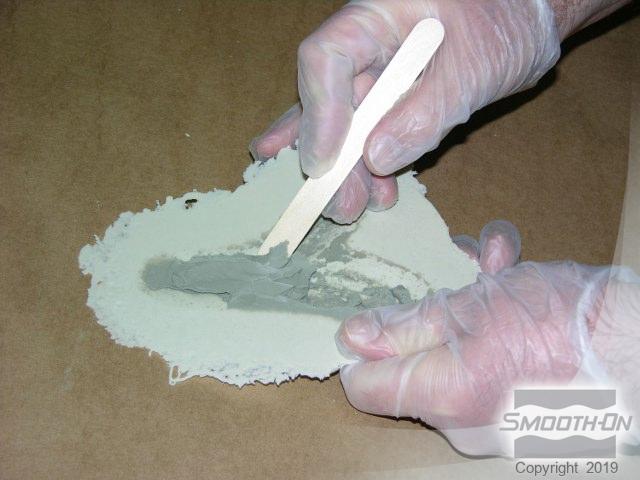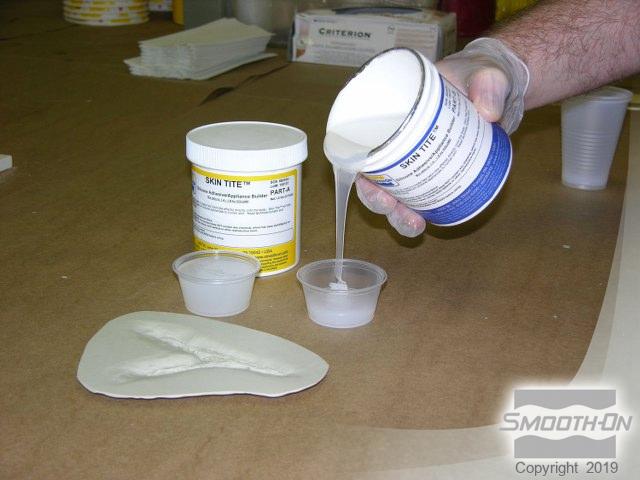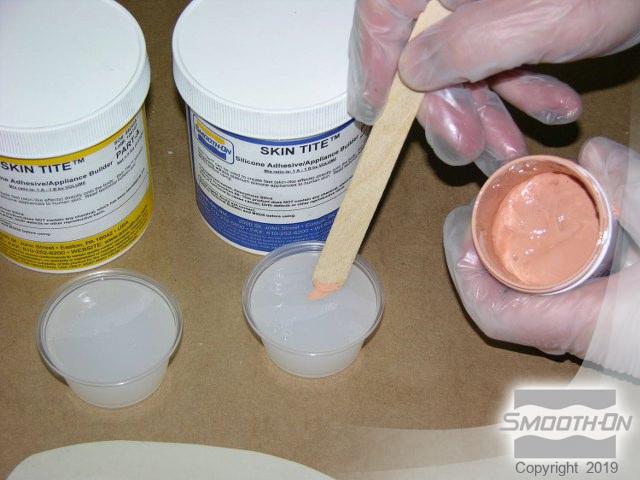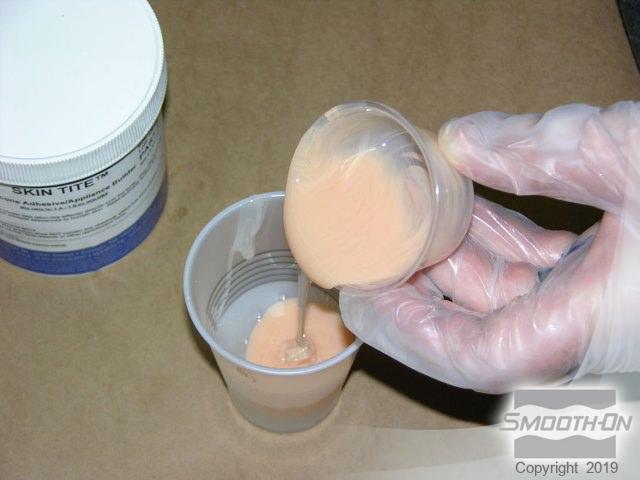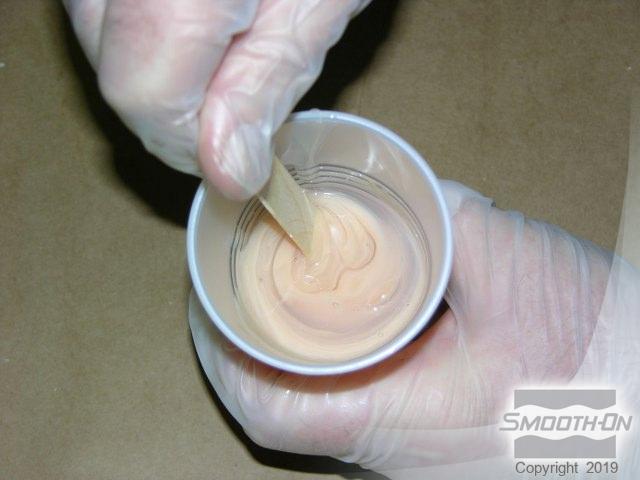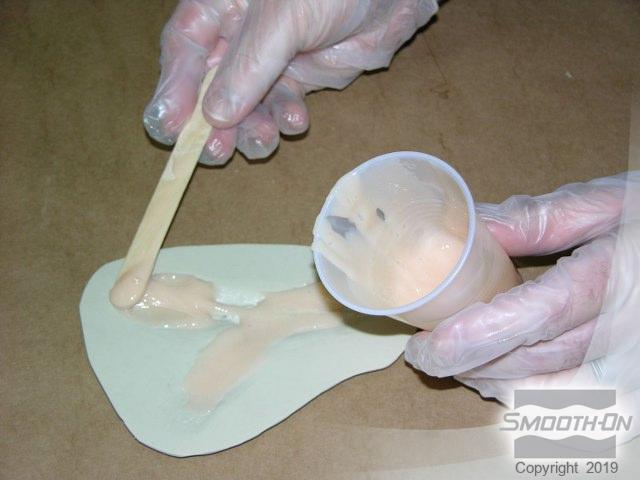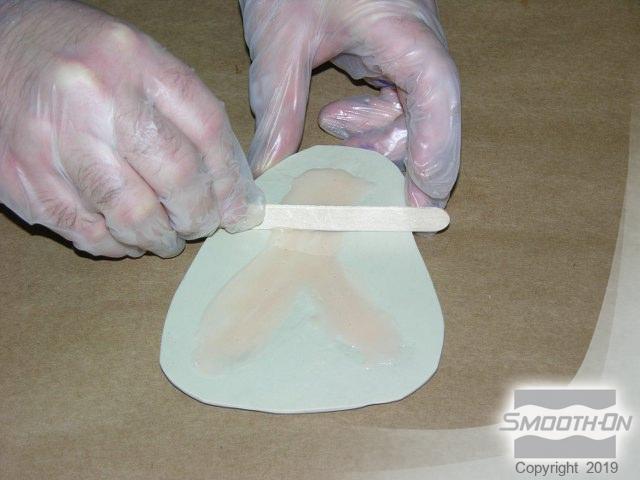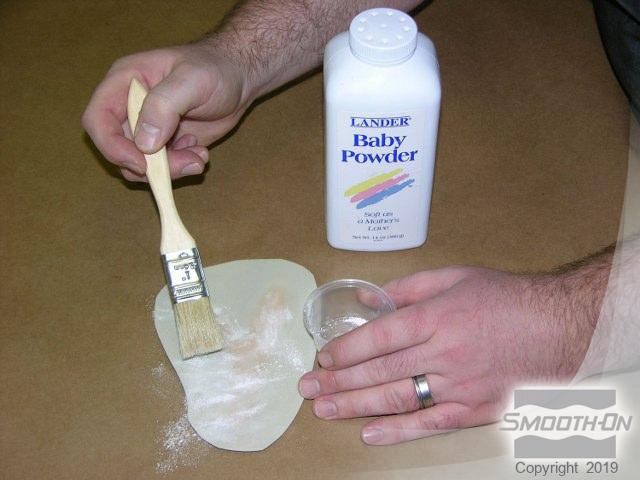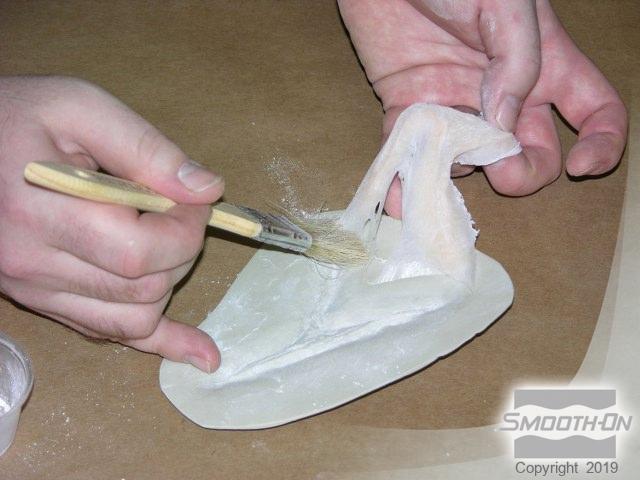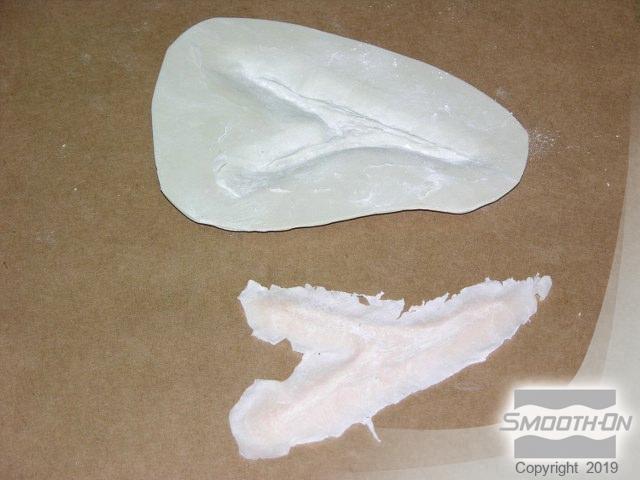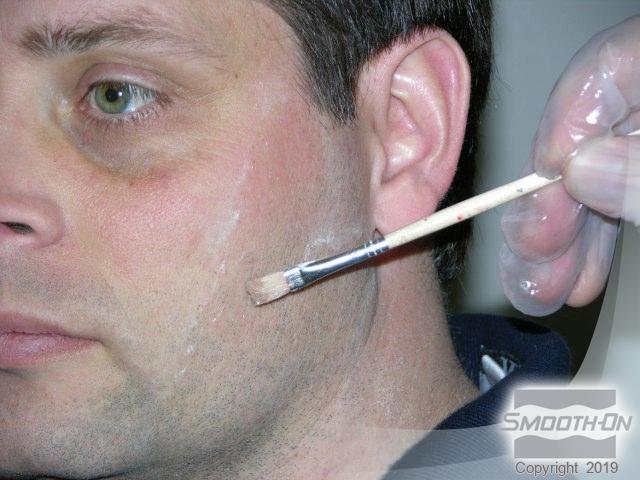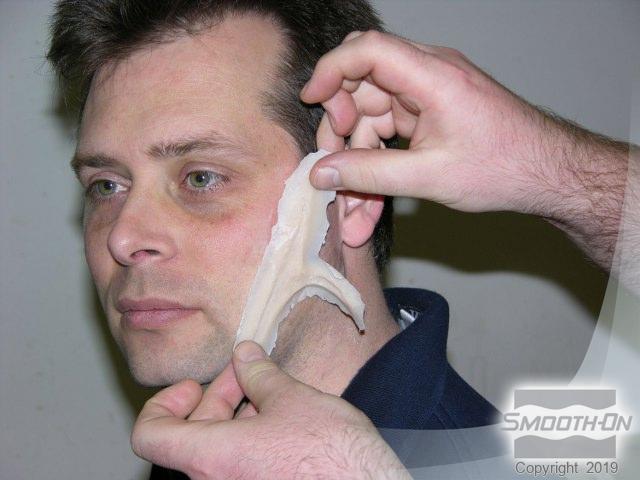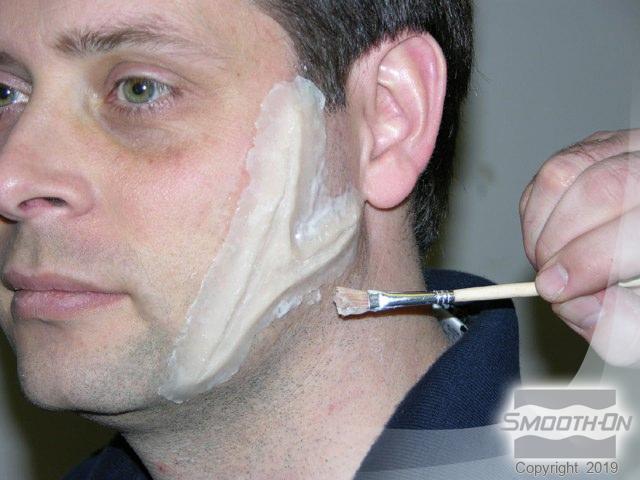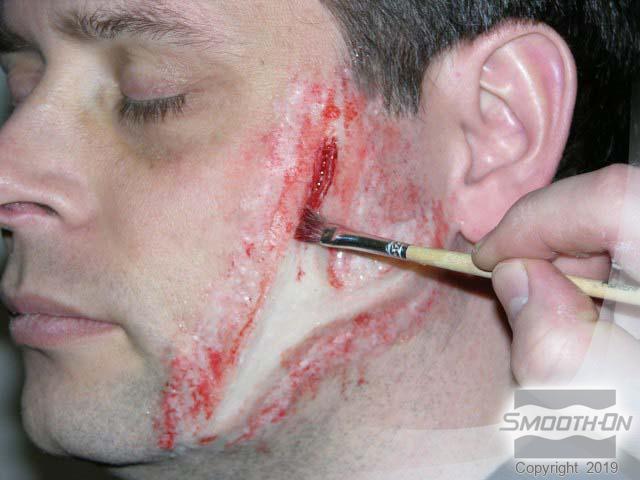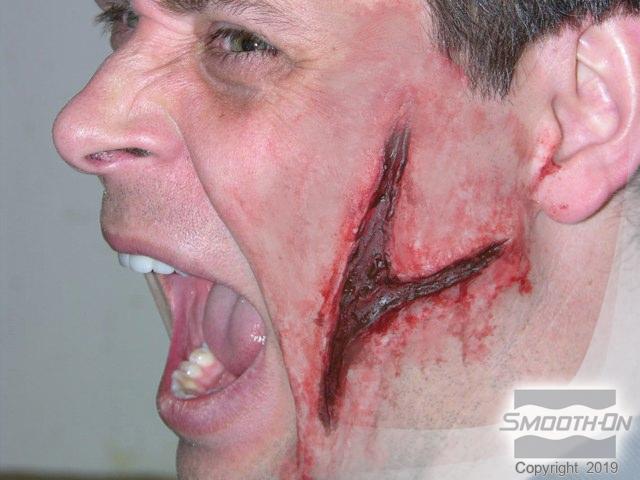How To Make a Silicone Wound Using a Plate Mold
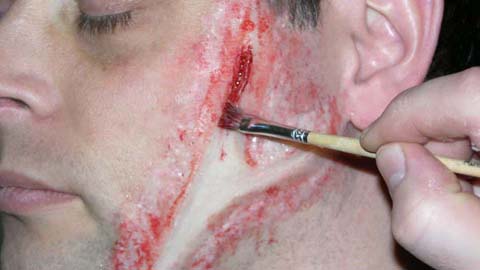
Overview
This step-by-step guide will illustrate how to make a flat resin plate mold that you can cast platinum silicone into to make a realistic scar or wound make-up effect.
Looking for new Halloween ideas or need to create a theatrical fake scar or wound? Follow this step-by-step guide to making a facial wound appliance.
Materials Used in this Tutorial
- Shell Shock® Brushable Plastic
- Skin Tite®
- Silc-Pig®
- Ease Release® 200
- Non-Sulphur Clay
- Melamine Board
- Mixing Sticks and Containers
- Paint Brush
- Baby Powder
Step 1: Designing Wound
Create a sculpture of desired wound in non-sulphur clay, then apply Ease Release 200 to the entire surface.
Step 2: Measuring Shell Shock™
Measure Shell Shock™ Parts A and B separately (1A:5B by weight), and then combine and mix thoroughly.
Step 3: Applying Shell Shock™ To Sculpture
First, apply a thin detail coat of Shell Shock™ by stippling it onto the clay sculpture. After the first layer, mix, measure, and apply a second thicker batch of Shell Shock™. Repeat once more for a third batch, creating 3/8'' (1cm) mold thickness.
Step 4: Demold
Remove the Shell Shock™ mold from the board and clear the excess clay out of the mold using a wooden stick.
Step 5: Measure Skin Tite™
After the edges of the mold are sanded smooth, measure Skin Tite™ parts A and B separately (1A:1B by volume). Add Silc-Pig™ flesh tone pigment to Skin Tite™ part B and to Skin Tite™ part A. Mix the Skin Tite™ silicone thoroughly for a perfect wound make-up effect.
Step 6: Casting and Demolding Skin Tite™ From Mold
Spread the mixed Skin Tite™ into the mold using a wodden stick and scrape the excess Skin Tite™ away. After a 10-minute cure, powder the Skin Tite™ piece and carefully remove it from the Shell Shock™ mold.
Step 7: Applying Skin Tite™
The Skin Tite™ wound make up appliance is now ready for application. Mix Skin Tite™ and apply it to the model's skin. Then, mix more Skin Tite™ and use it to blend the edges of the piece. After the Skin Tite™ cures, apply theatrical makeup for a fake blood effect. The finished piece bends and flexes with the model's facial movements.
